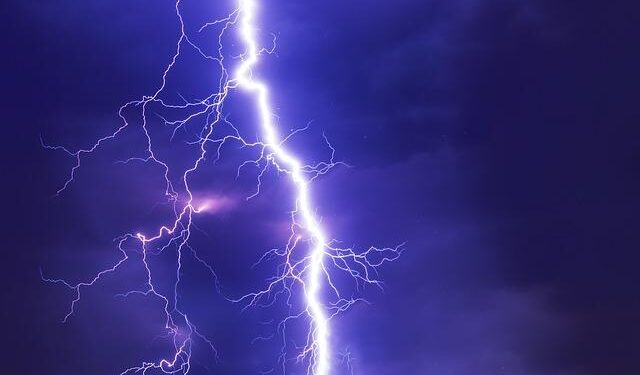Scientists have taken a significant step forward in unraveling the mysteries behind lightning by successfully trapping particles that play a crucial role in its formation. Researchers featured in a recent EurekAlert! report have developed innovative techniques to isolate and study these charged particles, shedding new light on the complex electrical processes in thunderstorms. This breakthrough not only enhances our fundamental understanding of lightning but also opens pathways for improved weather prediction and lightning safety measures.
Trapping Particles Unlocks New Understanding of Lightning Formation
Recent breakthroughs in particle trapping technology have propelled scientists closer to demystifying the electrifying phenomenon of lightning. By capturing and analyzing charged microparticles within controlled environments, researchers have uncovered crucial interactions that mirror atmospheric conditions during thunderstorms. This method allows the observation of particle behavior and charge accumulation, revealing how microscopic collisions and aggregations could serve as precursors to the massive electrical discharges visible in stormy skies.
Key findings from the trapped particle experiments include:
- Charged particles exhibit complex clustering patterns that amplify electric fields.
- Particle collision rates directly influence the buildup of static electricity necessary for lightning strikes.
- Humidity and temperature variations alter the trapping efficiency and charge retention of particles.
| Factor | Impact on Lightning Formation |
|---|---|
| Particle Size | Determines charge capacity and mobility |
| Charge Magnitude | Influences electric field strength |
| Environmental Humidity | Affects particle interactions and discharge timing |
Scientists Reveal Detailed Mechanisms Behind Lightning Discharges
In a groundbreaking study, researchers have unraveled the complex interplay of charged particles within storm clouds that triggers lightning strikes. By employing advanced particle trapping techniques, the team was able to monitor microscopic interactions with unprecedented precision. These findings shed light on how tiny ice crystals and supercooled water droplets collide and transfer electric charges, intensifying the electric field until it culminates in a dramatic discharge of lightning.
Key discoveries from the study include:
- Charge separation dynamics: Detailed mapping of how positive and negative charges segregate within storm columns.
- Particle collision influence: Identification of specific collision patterns responsible for electrification build-up.
- Triggering thresholds: Determination of critical electric field strengths needed to initiate lightning.
| Particle Type | Charge Role | Observed Behavior |
|---|---|---|
| Ice Crystals | Positive | Ascend and accumulate charge at cloud tops |
| Graupel (soft hail) | Negative | Descend, transferring electrons to ice crystals |
| Supercooled Droplets | Neutral/Variable | Facilitate charge transfer during collisions |
Recommendations for Improved Lightning Prediction Based on Particle Dynamics
Advancements in lightning prediction hinge on a nuanced understanding of how microscopic particles become trapped and influence electrical charge distribution within storm clouds. Researchers emphasize the need to integrate particle dynamics models with real-time atmospheric data, enabling more accurate simulations of charge buildup. Such integration could transform forecasting, shifting from broad meteorological patterns to pinpointing microphysical triggers of lightning events. Key improvements include:
- Enhanced sensor arrays to track particle motion and electric field variation at multiple altitudes.
- Machine learning algorithms that correlate particle behavior with lightning incidence patterns.
- Cross-disciplinary collaboration between atmospheric physicists and materials scientists to model particulate charge retention.
By emphasizing the entrapment and movement of charged particles-ranging from ice crystals to dust-forecasters can develop dynamic risk maps with greater temporal and spatial resolution. This approach promises to reduce false alarms and increase lead time for severe storm warnings. The following table illustrates potential improvements in prediction accuracy when particle dynamics data is incorporated into existing lightning detection networks:
| Prediction Method | Average Lead Time | Accuracy Improvement |
|---|---|---|
| Traditional Meteorological Models | 5 minutes | Baseline |
| Particle Dynamics Integrated Forecast | 12 minutes | +35% |






























